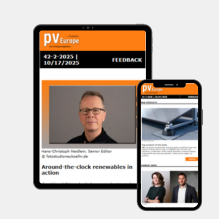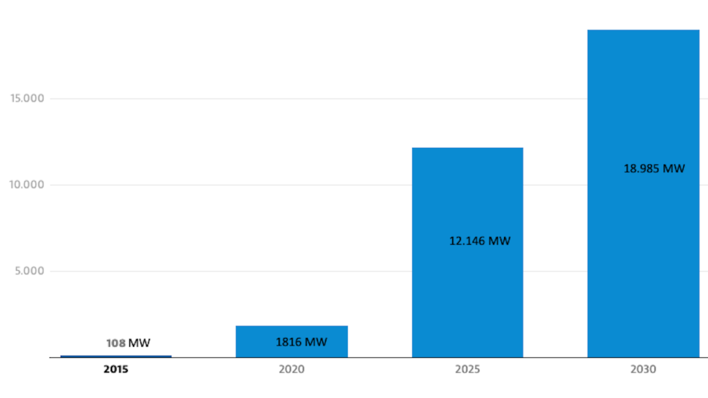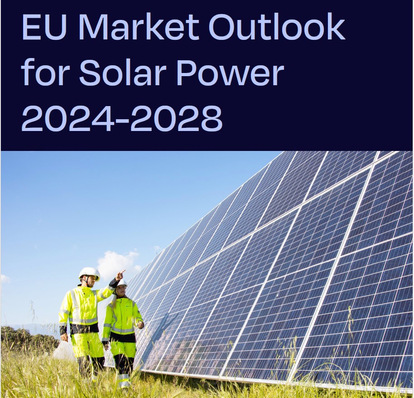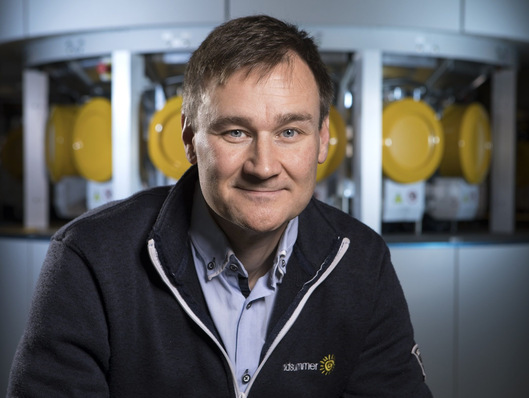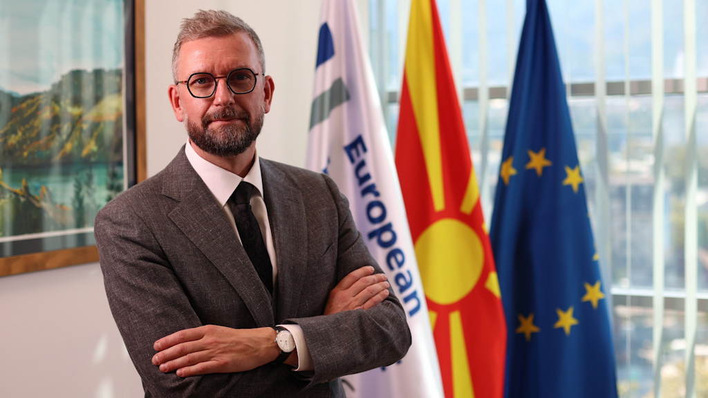Europe is at a pivotal moment in the energy transition. Spurred by the EU Green Deal and a wave of national climate goals, solar adoption has soared to unprecedented levels: Across the European Union, the solar sector has experienced remarkable growth. In 2024, the EU installed a record 65.5 GW of new solar capacity, slightly surpassing the 62.8 GW added in 2023. This expansion brought the total installed solar capacity to approximately 338 GW by the end of 2024. Germany stands out as a clear leader, adding an impressive 16 GW of new solar capacity in 2024 alone, a milestone that underscores both the immense potential and the complex challenges of scaling renewable energy.
While Germany’s number of solar installers is on track to nearly double (from 3,800 in September 2023 to over 7,000 by 2025), this is still insufficient to meet the burgeoning demand. A similar trend is evident across Europe: By the end of 2023, the solar sector employed approximately 826,000 people, reflecting a 27% increase from the previous year while demand for qualified workers is still high.
Growing skills gap in a booming solar job market
In essence, the market is racing forward while labor capacity struggles to keep pace. As solar systems become more sophisticated – encompassing batteries, heat pumps, and EV chargers – a crucial question emerges: How can installers maintain both efficiency and scalability amidst rapid change and a shortage of skilled labor?
The answer lies in hybrid skill sets that extend well beyond traditional craftsmanship. Solar now demands strategic planning, advanced software capabilities, and deep regulatory insights. Mastering these diverse competencies positions companies to rise above the labor bottleneck, ensuring they can deliver projects at scale while maintaining quality.
The skill shortage in figures – a widening gap
Germany’s solar and wind sectors alone are projected to require 300,000 additional skilled workers by 2030, painting a sobering picture of just how intense the competition for talent has become. Meanwhile, the solar sector across the EU is expected to grow from 830,000 in 2024 to over 1 million by 2027, driven by an anticipated annual installation of 88.5 GW by that year.
While more installation crews are certainly needed, there is also a pressing need: today’s photovoltaic systems incorporate sophisticated data-driven tools, interconnect with various other clean technologies, and must comply with local rules that change frequently. Traditional training in roofing or electrical wiring, though essential, no longer covers everything.
Net-Zero Academies need to accelerate training and address skills shortages
This workforce gap is made more acute by the time-intensive, manual processes still involved in project design, permitting, and installation – any inefficiency magnifies existing resource constraints. Meanwhile, an aging workforce adds to the urgency. Many experienced electricians and technicians are on the verge of retirement, precisely when the solar sector most needs them. On the positive side, younger professionals who desire meaningful careers represent a promising wellspring of new talent. By positioning solar installation as a future-proof, impactful field, the industry can attract bright minds eager to help drive Europe’s energy transition.
More than craftsmen
The modern solar technician operates in a far more complex realm than in years past. While hands-on expertise remains vital – mounting modules, wiring inverters, and ensuring electrical safety – today’s projects demand the use of advanced software platforms, engagement with data analytics, and adherence to evolving regulations. Success often hinges on the ability to translate a homeowner’s unique needs into a comprehensive, tech-forward solution.
For instance, adding battery storage and an electric vehicle charger to a solar installation requires an understanding of load profiles, real-time monitoring, and the intricacies of local utility interconnection rules. In a decentralised energy landscape, installers who can combine physical labor with digital fluency and regulatory expertise are poised to stand out. Such hybrid skill sets not only enhance overall project quality but also attract customers who seek an all-in-one partner capable of delivering truly integrated home electrification.
Recent labor market research reinforces this need for hybrid skill sets. A study by the Bertelsmann Stiftung analyzed more than 2.6 million online job postings in the solar and wind sectors and found a clear skills gap: traditional vocational roles – such as roofers or HVAC technicians – offer a solid foundation for entering the solar industry, but they fall short of meeting today’s demands without targeted upskilling. The study reveals that specific expertise in areas like photovoltaic system installation, solar thermal technology, digital design tools, and regulatory compliance is now essential. This underscores the urgency of creating cross-disciplinary training pathways tailored to the renewable energy workforce.
AI and software can alleviate the skills shortage
AI-driven platforms have the potential to address some of the labor constraints by automating complex or repetitive tasks. Aurora Solar streamlines key steps in PV system design and project workflows by leveraging AI, LiDAR data, and automation – from generating precise 3D shading analyses to producing optimizsd system layouts and pre-filled permitting documents, all based on just an address. By removing these bottlenecks, each technician can handle a greater number of projects without compromising on accuracy or customer satisfaction.
How AI is advancing photovoltaics
Beyond boosting efficiency, Aurora Solar’s technology helps minimise costly errors in PV planning and execution. Automated Bill of Materials features ensure that system components align precisely with design specifications, while digital tools reduce the need for on-site visits by enabling remote site assessments and accurate virtual planning. These improvements free up skilled workers to concentrate on tasks that demand human ingenuity, such as client consultations, on-site troubleshooting, and advanced system configurations. Yet even as AI reshapes project workflows, it introduces fresh skill demands. Future-proof solar workforces must be adept at interpreting data outputs, addressing the occasional software glitch, and continually updating their technical know-how as software platforms evolve.
Industry can close the skills gap
Comprehensive training and upskilling programs hold the key to bridging the solar skills gap. Industry leaders, educational institutions, and policymakers must work together to craft specialised learning pathways. These can include focused certificate programs or short-format boot camps, designed to rapidly equip electricians and roofers with the digital, regulatory, and financial competencies now integral to modern installations.
Global Energy Talent Index: Competition for renewable professionals intensifying
For example, Germany’s renowned dual-education model provides a valuable framework, blending practical experience with theoretical coursework. By adapting this approach for solar, a new wave of technicians can move quickly from the classroom to the rooftop, ready to navigate digital design software and local regulations with ease. At the same time, greater standardisation of components and supply chains can reduce on-site complexities. When married with robust logistics and scheduling tools, each project becomes an opportunity to accomplish more with fewer human hours.
Hybrid key to the energy transition
Europe’s solar industry is at a crossroads. It’s growing at a historic pace, yet risks hitting the brakes due to insufficient skilled labor. The solution rests on two parallel transformations: embracing digital solutions that optimise efficiency and nurturing a workforce with hybrid skill sets blending technical know-how, regulatory awareness, and data-driven acumen.
Technology is both an accelerator – automating repetitive tasks and a driver of new competencies – requiring digital-savvy technicians who can interpret data and navigate evolving tools. The time is now for solar companies, policymakers, and educational institutions to invest in collaborative training frameworks and digital support solutions. By doing so, we ensure the next generation of solar professionals is ready to meet the climate challenge head-on.
Organisations that prioritise hybrid skills will emerge not only as industry leaders but also as indispensable partners in Europe’s broader energy transition. By scaling efficiency, fostering innovation, and inspiring new talent, the solar sector can seize this moment to lead Europe into a cleaner and more resilient future. (Chris Hopper/hcn)



